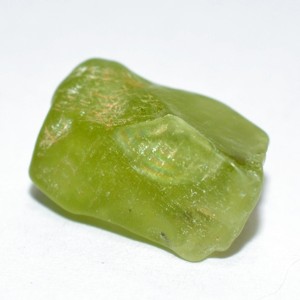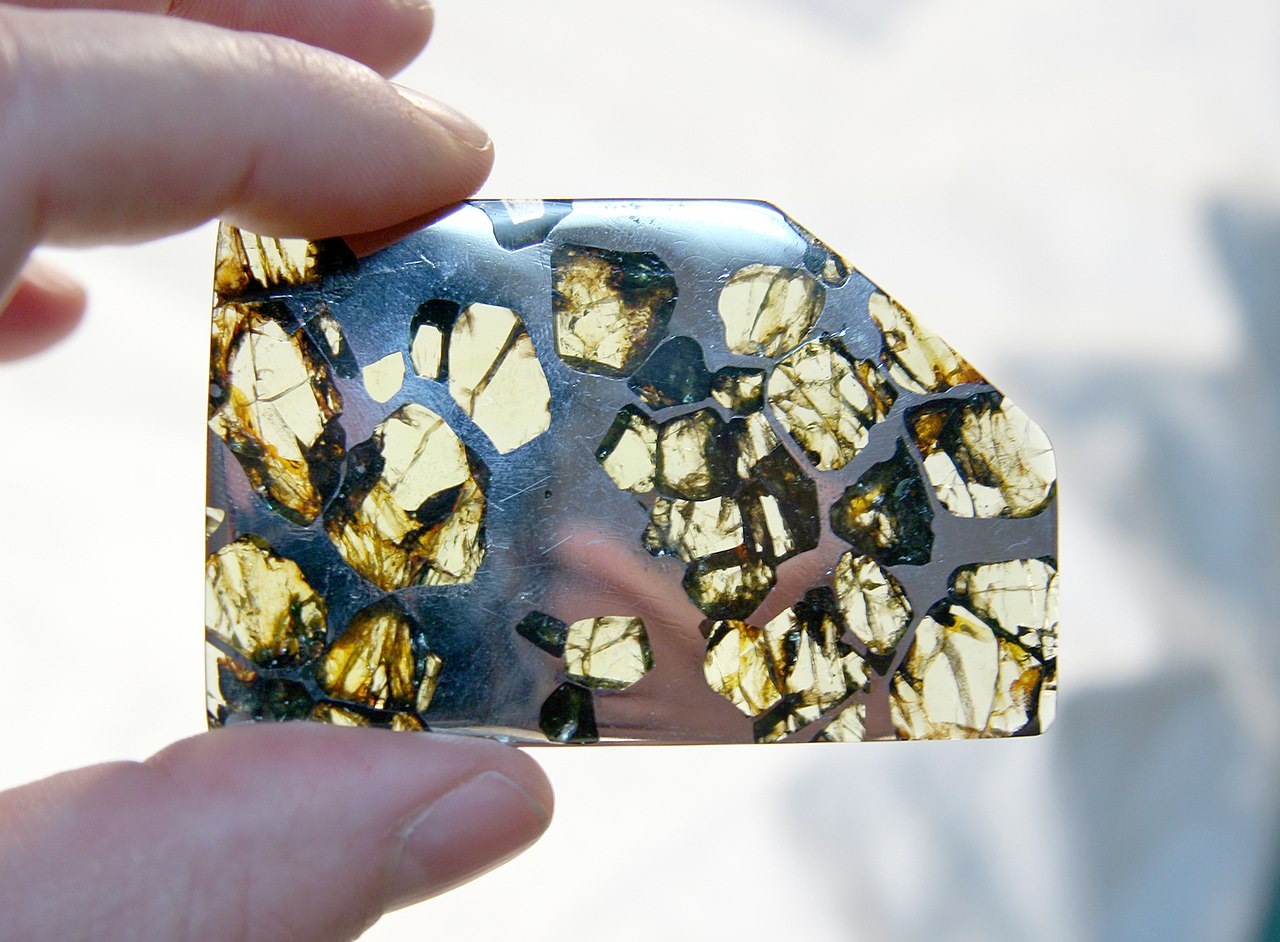After a brief foray into corundums (corunda?), beryls, and chrysoberyls, with peridot we're back in the realm of silicates: minerals composed primiarily of SiO4.
Peridot is rich with magnesium (sometimes iron): (Mg, Fe)2SiO4. One a microscopic level, the whole thing looks like this:
Peridot, then, exhibits the same characteristics we've come to expect of silicates. What makes peridot unique is that it is always and only an olive yellow-green color. In fact, properly speaking, its full name is peridot olivine—olivine is the larger class of Mg- and/or Fe-rich silicates; peridot is the name given to gem-quality samples.
Where the name comes from is unclear. The first written record of it in English is a 1705 translation of Latin church records from 1245. It might come from the Arabic faridat, meaning only "gem," or it might be a corruption of the Anglo–Norman word pedoretés. The Gemological Institute of America favors the former; the OED favors the latter. Historically, high-quality peridot olivine was often confused with emerald, or sometimes topaz; this is probably why the stone didn't come away with its own name right off the bat. This confusion was rampant in all places and ages, but especially in the treasure stores of European churches. Much like the Black Prince's red spinel (thought to be a ruby at the time), the stones in the Dreikönigsschrein in Köln, Germany were long thought to be emeralds—in fact, they are peridots.
The Egyptians mined quite a significant amount of peridot, and used it as a ward against evil and "terrors of the night." It was also thought to treat asthma and reduce the thirst of a fevered person. The stone's power was thought to be enhanced by setting it in gold, stringing it through the hair of a donkey, and wearing it on your left arm.
While it doesn't actually help with asthma, peridot olivine does have other, practical purposes. Right now it is being seriously investigated as a tool in the fight against global climate change, specifically as an agent for sequestering CO2. It's also used in blast furnaces in steel production. On a more frivolous note, olivine is also often used in Finnish saunas as it's fairly dense and also resistant to weathering.
Peridot, while lovely, is not as rare as some of the other stones we've recently looked at and does not typically command jaw-dropping prices. It is also not synthesized either; the only imitation on the market is green glass.
Where the name comes from is unclear. The first written record of it in English is a 1705 translation of Latin church records from 1245. It might come from the Arabic faridat, meaning only "gem," or it might be a corruption of the Anglo–Norman word pedoretés. The Gemological Institute of America favors the former; the OED favors the latter. Historically, high-quality peridot olivine was often confused with emerald, or sometimes topaz; this is probably why the stone didn't come away with its own name right off the bat. This confusion was rampant in all places and ages, but especially in the treasure stores of European churches. Much like the Black Prince's red spinel (thought to be a ruby at the time), the stones in the Dreikönigsschrein in Köln, Germany were long thought to be emeralds—in fact, they are peridots.
Cleopatra's fabled emerald collection might also have been peridot, but obviously there's no way for us to go back and check.
Needless to say, this green silicate has been around for a while, even if it's operated under many names. While olivine forms deeper in the mantle than most other stones (except diamonds), it is still made of silicate, the most common material in the Earth's crust. One good volcanic eruption can bring a whole host of rough peridot to the surface. Peridot can also form in outer space, on other planets or protoplanets; occasionally they make their way to Earth via a nickel–iron meteorite (called a pallasite). The result is stunning:
The Egyptians mined quite a significant amount of peridot, and used it as a ward against evil and "terrors of the night." It was also thought to treat asthma and reduce the thirst of a fevered person. The stone's power was thought to be enhanced by setting it in gold, stringing it through the hair of a donkey, and wearing it on your left arm.
While it doesn't actually help with asthma, peridot olivine does have other, practical purposes. Right now it is being seriously investigated as a tool in the fight against global climate change, specifically as an agent for sequestering CO2. It's also used in blast furnaces in steel production. On a more frivolous note, olivine is also often used in Finnish saunas as it's fairly dense and also resistant to weathering.
Peridot, while lovely, is not as rare as some of the other stones we've recently looked at and does not typically command jaw-dropping prices. It is also not synthesized either; the only imitation on the market is green glass.






I don't generally get around to saying it, but I really enjoy this series - thanks! :-)
ReplyDeleteThanks! I like doing all the research and writing for a post (generally takes me a couple of sessions spread out over a few days) and would do it anyway, but it's good to know that someone else enjoys my nerding out. :D
Delete